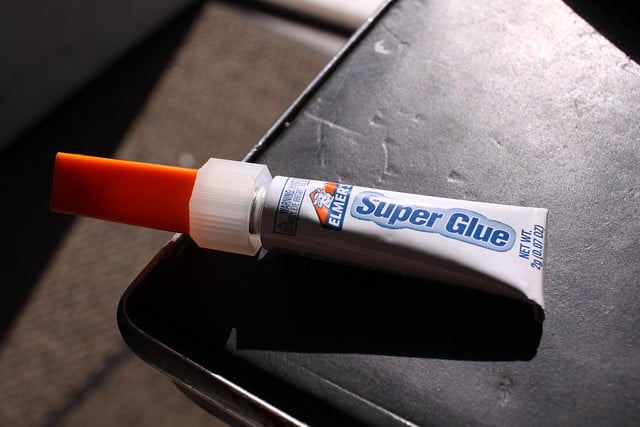Sculpting with clay is a great way to add dimension and 3D elements to your cosplay. While there are lots of different elements you can make with clay and many can be sculpted directly on top of other pieces like masks and armor to dry, that’s not always the case. Sometimes you’ll need to sculpt separately and then attach your clay pieces to the rest of your cosplay, which can turn out to be a challenge. Different types of clays will react differently to various adhesives, and the texture, shape, and weight of your clay elements will also matter during assembly.
Thankfully, there are some guidelines you can follow when gluing two of the main types of clay: ceramics (like Sculpey or polymer clay) and foam clay. In this post, we’ll explain how to glue clay types that are commonly used for cosplay as well as give you some tips for getting the best bond possible for your clay pieces.
Best Cosplay Glues for Ceramic Clay

- Super glue: Ceramic clay can be dense and relatively heavy regardless of the size of your sculpted piece. At the same time, its smooth texture can make it difficult for weaker adhesives to cling to. For these reasons, super glue is one of the best adhesives to use when you’re attaching clay details to your cosplay. Super glue works well with tricky smooth surfaces because of its adhesive power and quick dry time. Super glue is generally sold in smaller bottles, so it may be a little tiresome to use on a larger clay piece, but for lots of clay details or small elements you want to add to your cosplay, super glue is a great option.
- Attach & Build double-sided adhesive sheets: Another adhesive option for notoriously tricky-to-stick clays and ceramics is Attach & Build. These double-sided adhesive sheets deliver an instant hold with no fumes, no mess, and no dry time. You can cut Attach & Build to the size of your clay object, and then all you need to do is peel and stick to bond your clay to just about any other material: foam, fabric, thermoplastic, and many, many more. Attach & Build is a great solution when you’re working with more than just clay because it’s compatible with most cosplay materials, but it also has a strong enough bond to grip the smooth side of your clay. It’s also safe to use indoors and in small working areas because it gives off no fumes.
- E-6000: Finally, the last option we’d recommend for gluing clay pieces to your cosplay is E-6000. E-6000 is an industrial-strength adhesive that can bond some of the toughest materials together, including clay. E-6000 is applied from a tube, but you should use caution and wear a mask when working with this adhesive. It gives off harmful fumes that you don’t want to be breathing in. However, if you’re looking for an extremely strong hold and you have the right ventilation to make it safe to use, E-6000 can be a great adhesive solution.
Gluing Foam Clay to Your Cosplay

While ceramic clay pieces can be difficult to glue because of their weight and texture, lighter foam clays are an entirely different story. Foam clay sculpts like clay but then dries to the texture of foam. In general, once foam clay is set, you can treat it as you would any other foam, including when it comes to adhesives. Depending on the brand of your clay, it would probably be best to test it with the adhesive you’re planning to use first.
However, in most cases, the glues that work best with foam clay are the same glues that work with EVA. Hot glue would probably be a good fit for light foam clay pieces, and potentially contact cement if you have the space and ventilation to use it. You can also use both super glue and Attach & Build on both types of clay, if you prefer. While clay can be a little tricky to glue, rest assured that you have options available that can work with whichever type of clay you might be working with